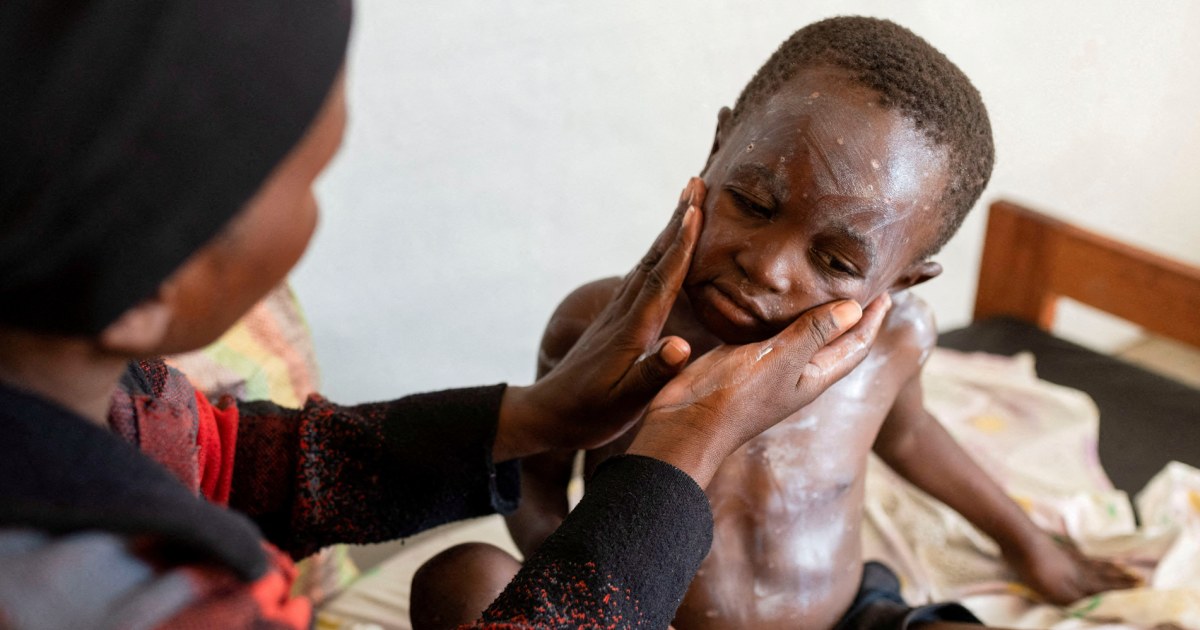U.S. confirms first case of more aggressive strain of mpox
The U.S. on Saturday reported its first case of a more aggressive strain of mpox: an individual in California who had recently traveled from Eastern Africa.
The case was confirmed by the California Department of Public Health and reported to the Centers for Disease Control and Prevention.
The person was treated in San Mateo County based on their travel history and symptoms and is now isolating at home and recovering, the state’s health department said in a press release. Public health workers are contacting people who had close contact with the patient, “but there is no concern or evidence” that the strain is currently spreading in California or the U.S., the statement said.
The U.S. is the sixth country outside of Africa to have detected the strain, according to the CDC, which can cause more severe disease than the version of the virus that spread widely in 2022.
This strain’s spread across several African countries prompted the World Health Organization to declare a global public health emergency in August, the second time for mpox in two years.
Mpox, formerly known as monkeypox, is a viral infection that causes painful lesions, often accompanied by flu-like symptoms. It is classified into two distinct groups: the more aggressive strain, clade I, and a somewhat milder strain, clade II.
Clade II was behind the global outbreak in 2022, which resulted in at least 32,000 infections and 58 deaths in the U.S.
Until recently, clade I had not spread beyond Central Africa, where it is considered endemic, and East Africa. But an outbreak in the Democratic Republic of Congo has led to cases in eight other African countries this year. In August, the first known case outside of Africa was confirmed in Sweden. Several days later, Thailand confirmed a case. Both patients had spent time in Africa.
Traveled-related cases have also been detected in Germany, India and the United Kingdom, according to the CDC.
Mpox spreads through direct contact with an infected person, animal or contaminated items like clothing or bedding. The version of clade II that spread in 2022 was passed primarily through sexual contact, particularly among men who have sex with men.
In the current outbreak, clade I has been spreading largely through contact with infected animals and transmission within households, according to disease experts. Two-thirds of the suspected cases from January 2023 to April 2024 were among children ages 15 and under, according to the Centers for Disease Control and Prevention. But a version of the strain, clade Ib, has also spread through sexual contact among female sex workers and men who have sex with men in Congo.
It’s unclear what transmission pathways might look like in the U.S., but some experts anticipate that clade I could spread among the same sexual networks as in 2022.
“I do expect that we will see cases,” said Dr. Marc Siegel, an associate professor of medicine at the George Washington School of Medicine and Health Sciences. “I think it will more likely be in the same population that was more at risk in the 2022-2023 outbreak. For the general population, I think this poses very little risk.”
Past mpox outbreaks of clade I in Africa have killed up to 10% of people who got sick, but the current outbreak in the Democratic Republic of Congo has a fatality rate of around 5%. That’s compared to a 0.2% global fatality rate for the 2022 outbreak.
However, health officials have said there’s reason to believe that clade I could pose a milder threat in the U.S. than it has in African countries this year, given that malnutrition rates are lower and the health care system is more robust.
The U.S. is also more prepared for an outbreak than it was in 2022. The CDC has instructed doctors to test for mpox and is scanning for both clades at wastewater sites across the country, including some airports.
Additionally, the country has an adequate supply of the two-dose Jynneos vaccine, which is available to men who have sex with men and other high-risk groups. The Department of Health and Human Service says two doses of the vaccine or a previous infection should protect against severe illness from clade I.
The U.S. administered around 1.2 million vaccine doses from May 2022 to January 2023. Health officials hope to expand that coverage, since just 23% of the population at significant risk has been fully vaccinated.
Mpox typically starts with a rash that progresses to small bumps on the skin, followed by fluid-filled blisters that eventually scab over. People may also experience a fever, headache, muscle aches, back pain, low energy or swollen lymph nodes.
Some people infected by clade II in the U.S. have described the lesions as exceedingly painful. They have historically appeared on the face, chest, palms of the hands and the soles of the feet, but during the 2022 outbreak, people developed lesions around the genital and anal region or inside the mouth and throat.


